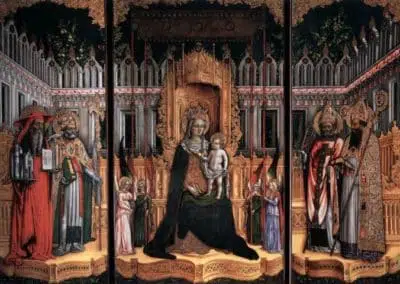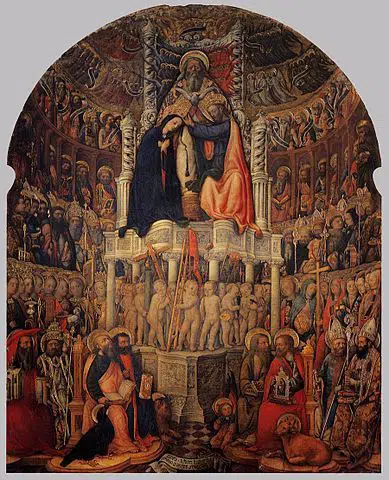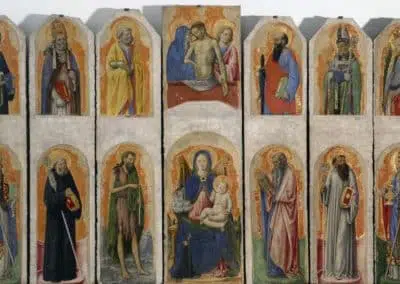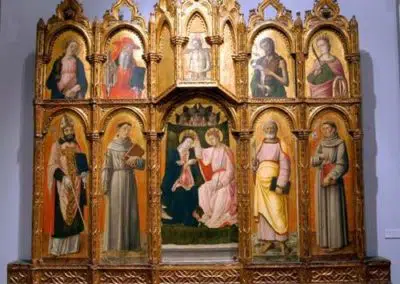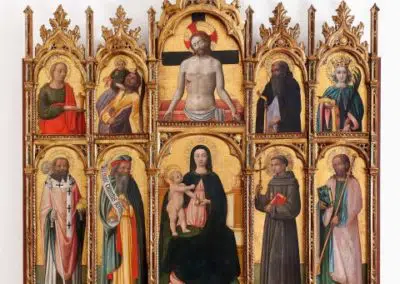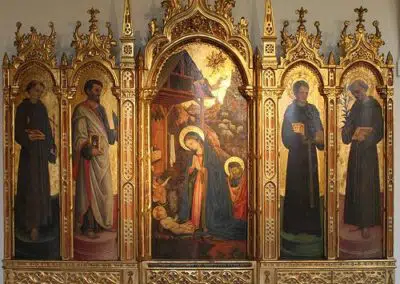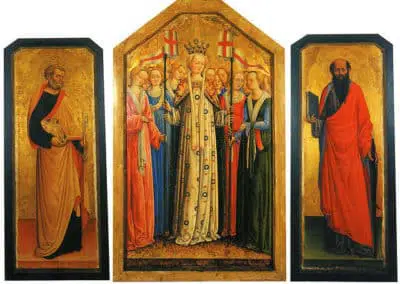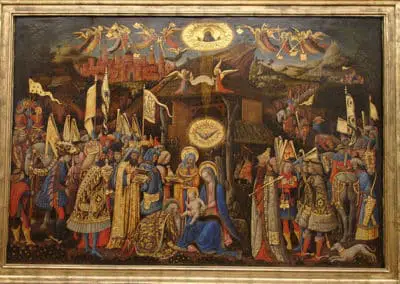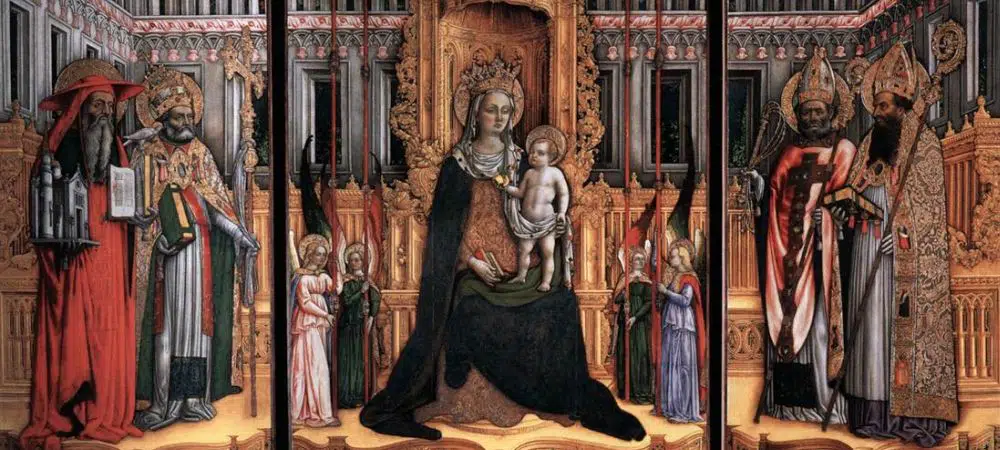
Antonio Vivarini – Murano 1420ca, Murano before 1484
Antonio Vivarini was born in Murano from a family of master glassmakers. Deeply influenced by Gentile da Fabriano, between 1440 and 1450 he became the greatest exponent of the Venetian Gothic tradition. Increasingly sensitive to a new movement of plastic and spatial painting, his works mark the transition from Gothic to the early Renaissance.
From the Gothic to the Renaissance
From 1441 to 1450 Antonio Vivarini was the educational leadership of a workshop in Venice and collaborated with his brother-in-law Giovanni d’Alemagna. The first work that he signs by himself is the “Polyptych” located in the basilica of Porec, in which appear figures of severe and solemn saints, modeled by a soft chiaroscuro. In these years, the artist painted numerous polyptychs for Venetian churches. Following his journey to Padua around 1447, his style underwent a further opening in the Renaissance sense, thanks to the influence of Squarcione and the innovations of Donatello.
Antonio Vivarini in Padua
The “Polyptych of the Adoration and Saints” dated 1447 (Prague, National Gallery) and the “Praglia Polyptych” dated 1448 (Milan, Pinacoteca di Brera) can be traced back to this phase. In 1448 Antonio Vivarini began to fresco the Ovetari chapel in Padua, alongside Niccolò Pizzolo, Andrea Mantegna and Giovanni d’Alemagna. But the last-mentioned’s death led him to return to Venice well in advance the end of his work.
With his brother Bartolomeo
Here he approaches his younger brother Bartolomeo, who leads him to adopt a more dry and severe linearism. Antonio Vivarini learns this style by reproducing the figures of his paintings to rigid mannequins as evidenced by the late polyptych “Coronation of the Virgin and the Saints” dated 1464 and located at the Civic Museum of Osimo.
His workshop will continue to run with his brother Bartolomeo and his son Alivse.

